OrthoScribe Integrated EHR Guide
Comprehensive reference for integrated EHR users.
Built by surgeons, for surgeons. OrthoScribe reduces documentation time with two complementary products: Wireless Mic (Speech‑to‑Text + Macros) and the AI Note Service (structured clinical notes). This guide consolidates setup, daily workflows, team collaboration, exports, tips, and troubleshooting for integrated EHR users.
OrthoScribe Apps
Everything you need to streamline clinical documentation and reduce time spent on notes
iPhone App
Main interface for AI-powered note generation
- Ambient audio capture
- Structured note generation
- Voice macro support
Web Portal
Comprehensive dashboard for reviewing notes, settings, and team collaboration
- Review & edit notes
- Manage macros & procedures
- Export to EMR
Desktop Wireless Mic
Real-time Speech-to-Text with macro support; straight to your desktop cursor
 Download for Windows
Download for WindowsApple Watch Companion
Quick, low-distraction recording device for visits
1. Install & Setup Checklist
1. Download OrthoScribe
• Install iOS app from the App Store; sign in with your Apple ID.

2. Enter Code
• When signing up, enter the integration code provided by your admin.
• Alternatively you can add the code later in "App Settings" → "Integration"
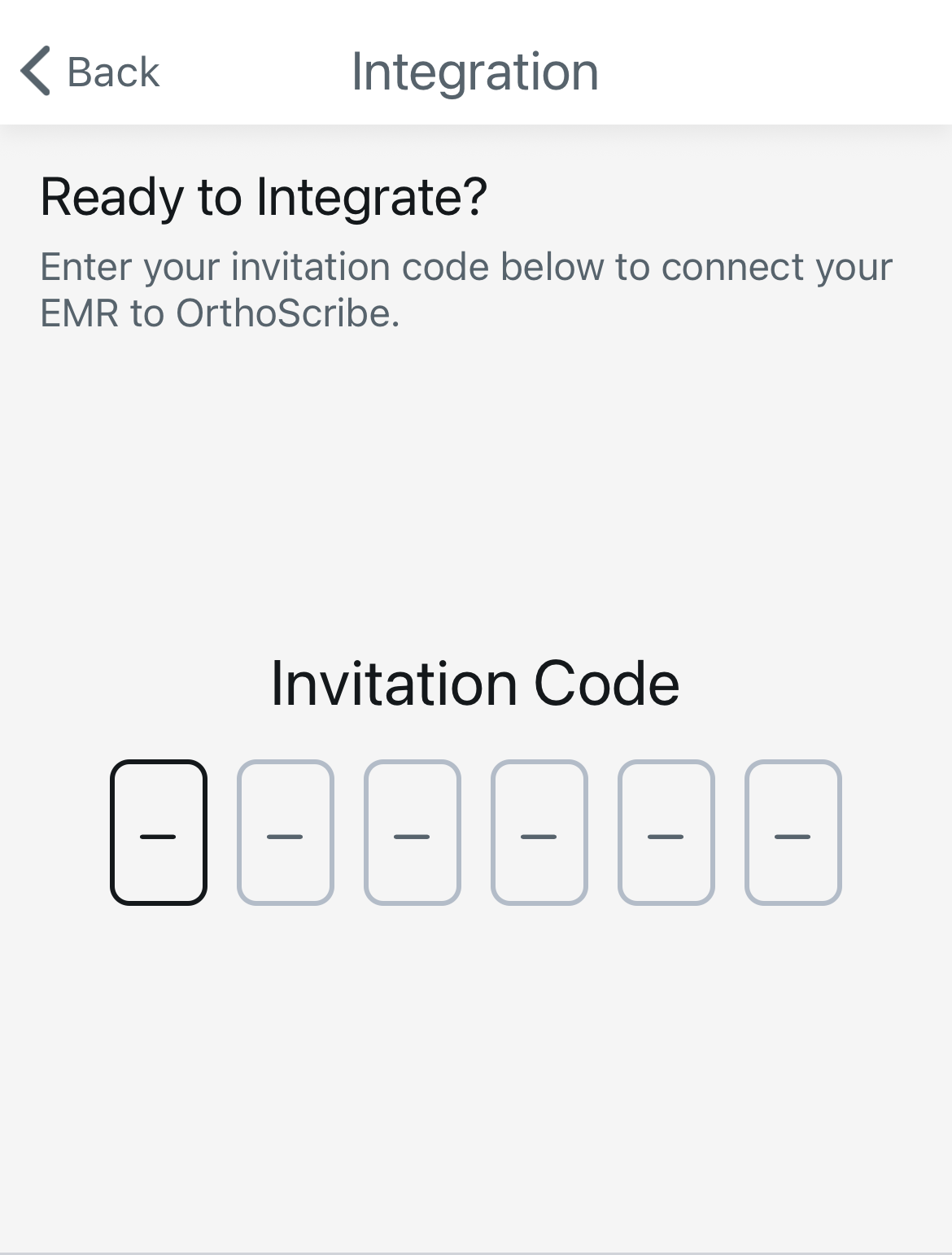
3. Configure Key Settings
• After signing up, configure these settings.
- • Speech to Text → Word Swap (custom vocab)
- • EMR Settings → Uploads (export settings) Choose where to export the notes into your EHR.
- • EMR Settings → Disclaimer (footer text)
- • Automatic Coding (CPT & ICD) (enable as desired)
- • Create starter macros in the web portal → Macros
4. Schedule Import
Your EHR schedule appears automatically inside OrthoScribe after integrating with your EMR.
5. Record the Encounter
- • Tap a patient → Start to capture ambient audio
- • Add direct dictation for specifics (imaging reads, plan details)
- • Use voice macros: say "insert [macro name]"
6. Review Note & Codes
- • Confirm sections (CC, HPI, PE, Diagnostic Studies, Impression/Assessment, Plan, Procedures)
- • If enabled, review Automatic Coding suggestions
7. Upload
Notes & codes auto-upload to the EHR. Complete final review/submit inside your EHR.
8. Edit
Subsequent edits in OrthoScribe sync to the EHR as configured
Daily Pattern (Integrated)
Open app (schedule auto-loaded) → Record → Review → Auto-upload → Submit in EHR
2. Schedule Sharing & Team Collaboration
How to Upload a Schedule for a Doctor:
- Tap the icon at the bottom right corner of the Schedule page.
- Select the doctor's name from the Provider dropdown.
- Choose the correct date.
- Use the Camera or Record button to upload the schedule using a photo or voice.
- Select the Schedule using the dropdown at the top of the Schedule page.
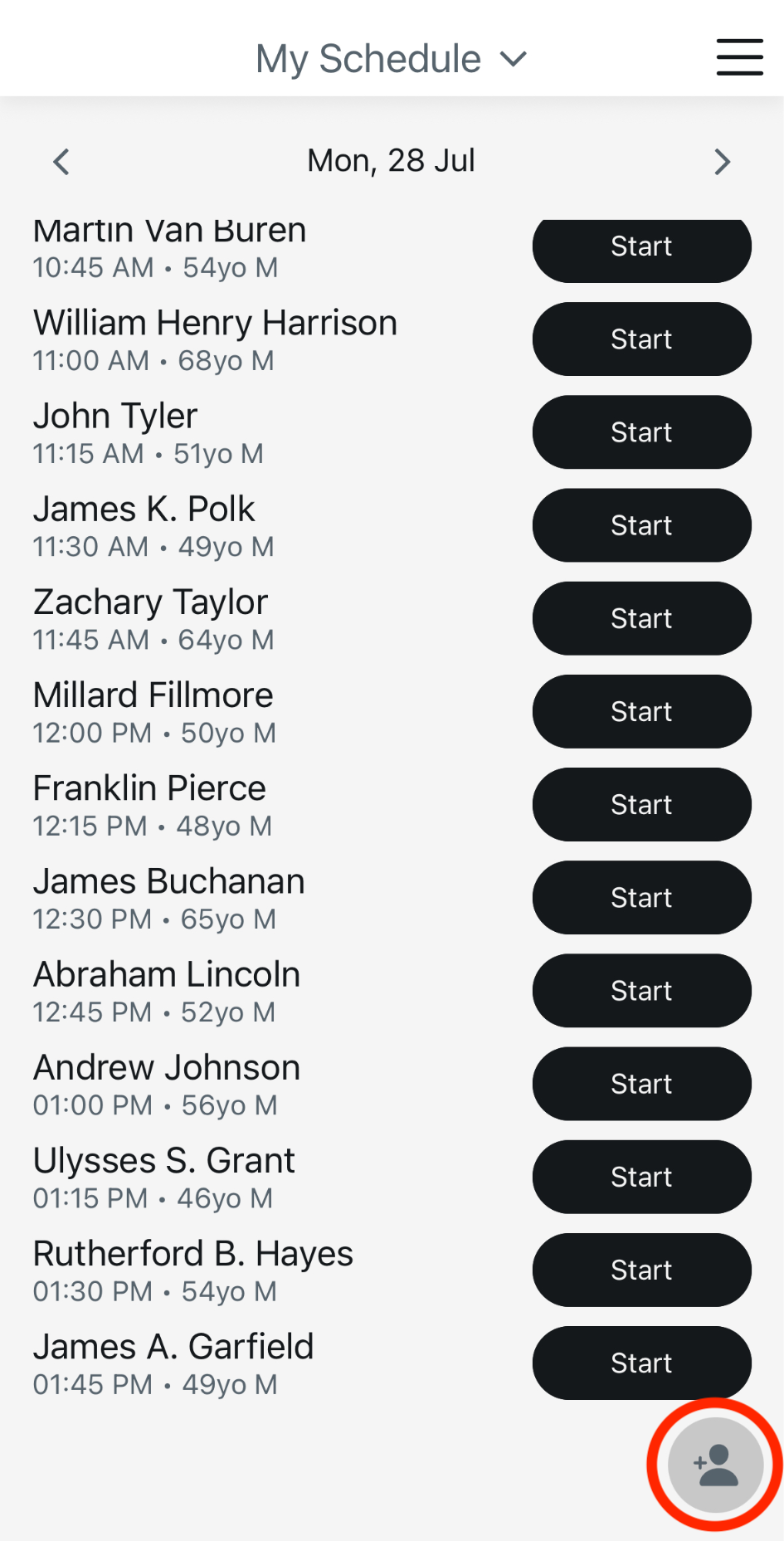
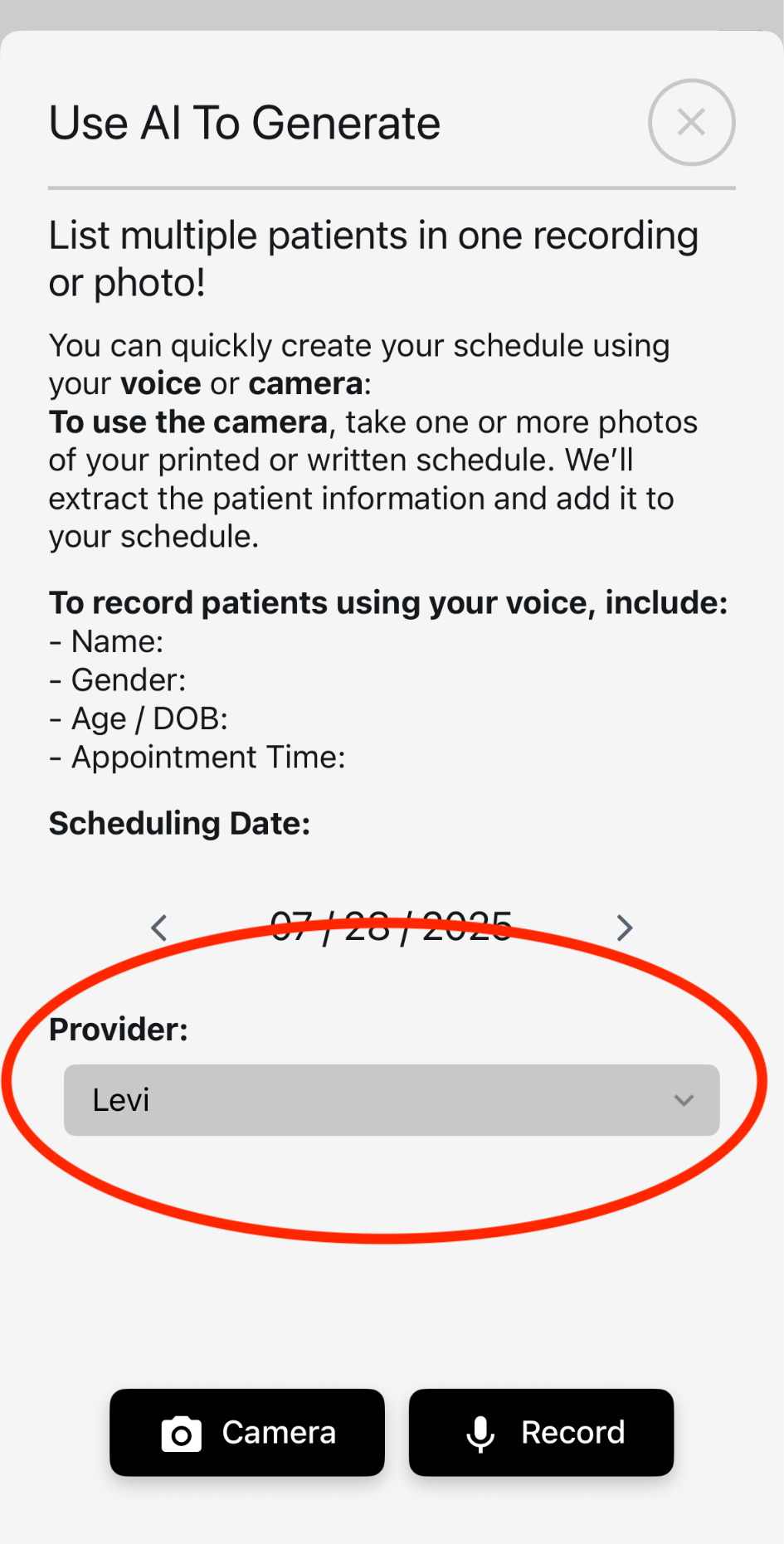
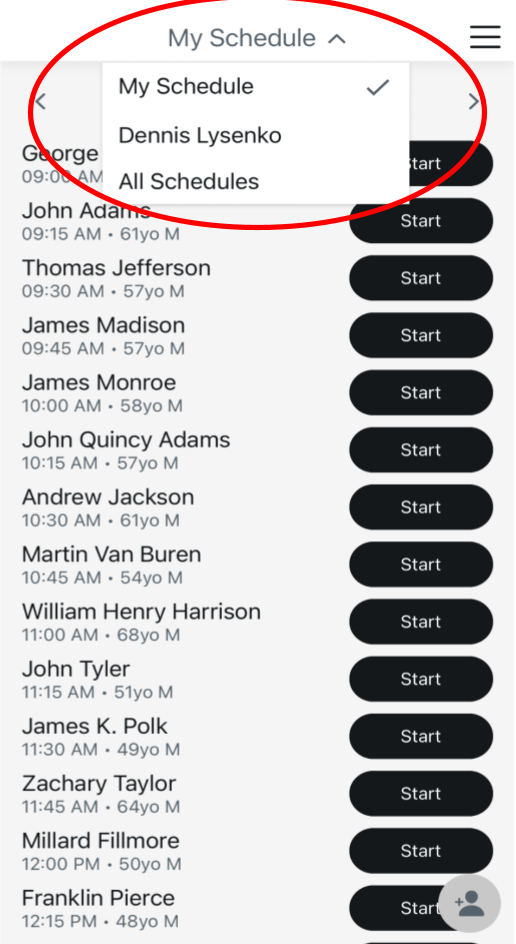
Setup Path
Menu → Settings → Share Schedule
Share with Provider → Send invitation. Two lists appear:
- • Providers Sharing with Me — you can view their schedules
- • Providers I Am Sharing With — they can view your schedule
QR Code Linking
One user displays a QR; the other scans in-app to link instantly.
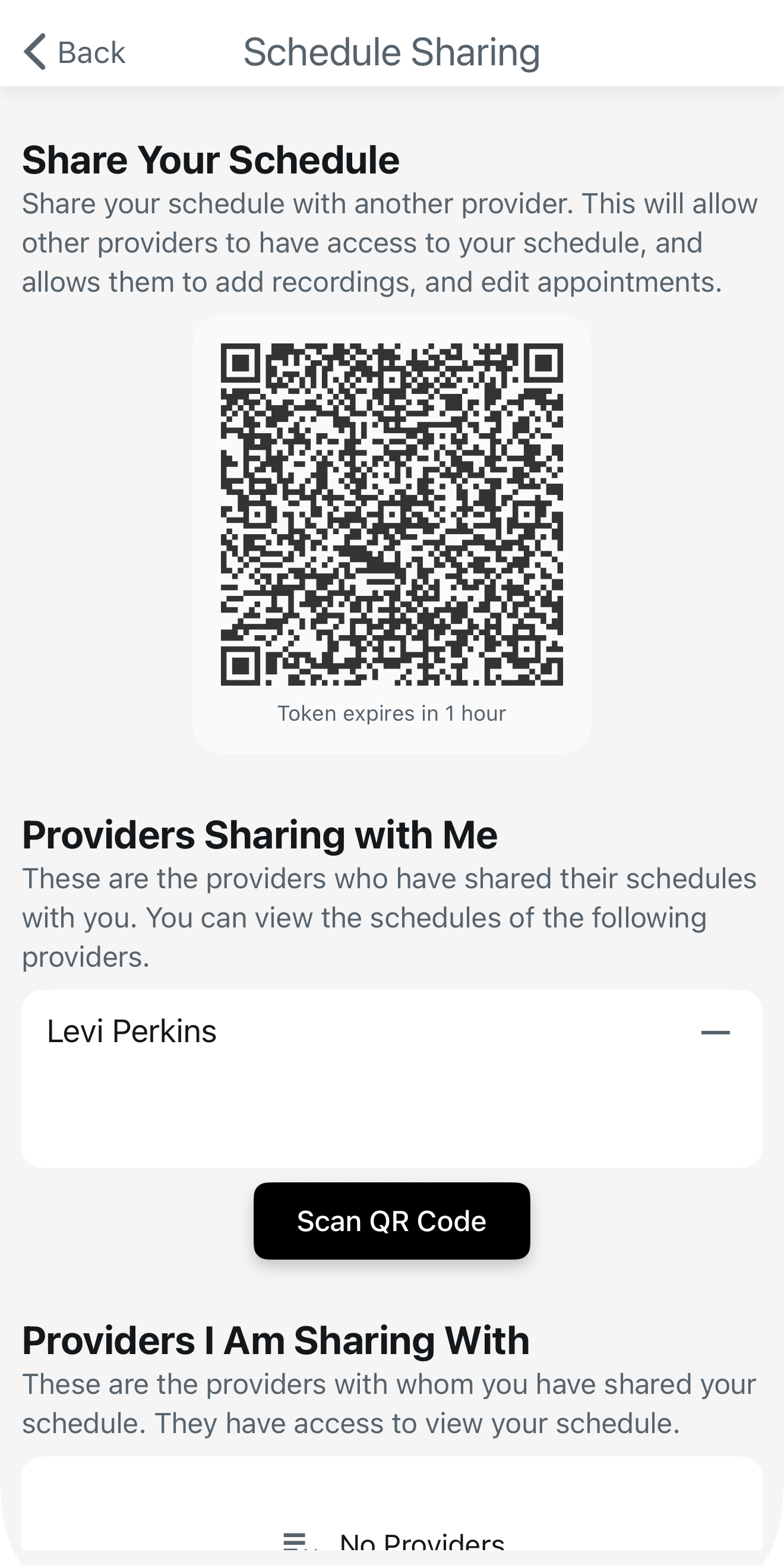
3. Recording Encounters (AI Note Service)
Getting Started
Open a patient from My Schedule → tap Start.
Recording Modes
Ambient Mode
Keep the phone nearby and speak naturally; casual conversation is okay.
Direct Dictation
Speak section-targeted details (e.g., MRI findings) exactly as you wish them transcribed.
Voice Commands
- • “Insert [macro name]”
- • “Add to Plan…”
- • “In Diagnostic Studies…” / “In Physical Exam…”
Finishing Up
- • Tap End Session to generate the structured note
- • Use Add later to append audio and Reprocess
- • Laterality: Always state side (e.g., "right knee"). Gestures aren't recognized.
4. Macros
Creating Macros:
Macros allow users to insert saved text into your note with a simple voice command. Best used for frequently used phrases (eg. surgery complications, x-rays, and physical exams)
- • Go to app.orthoscribe.ai to add your macros. Macros can be added and modified at any time under the "Macros" tab on our site
- • If you need assistance using macros, please contact us at support@lotusscientific.com to set up a time to build your macros with one of our physician advisors
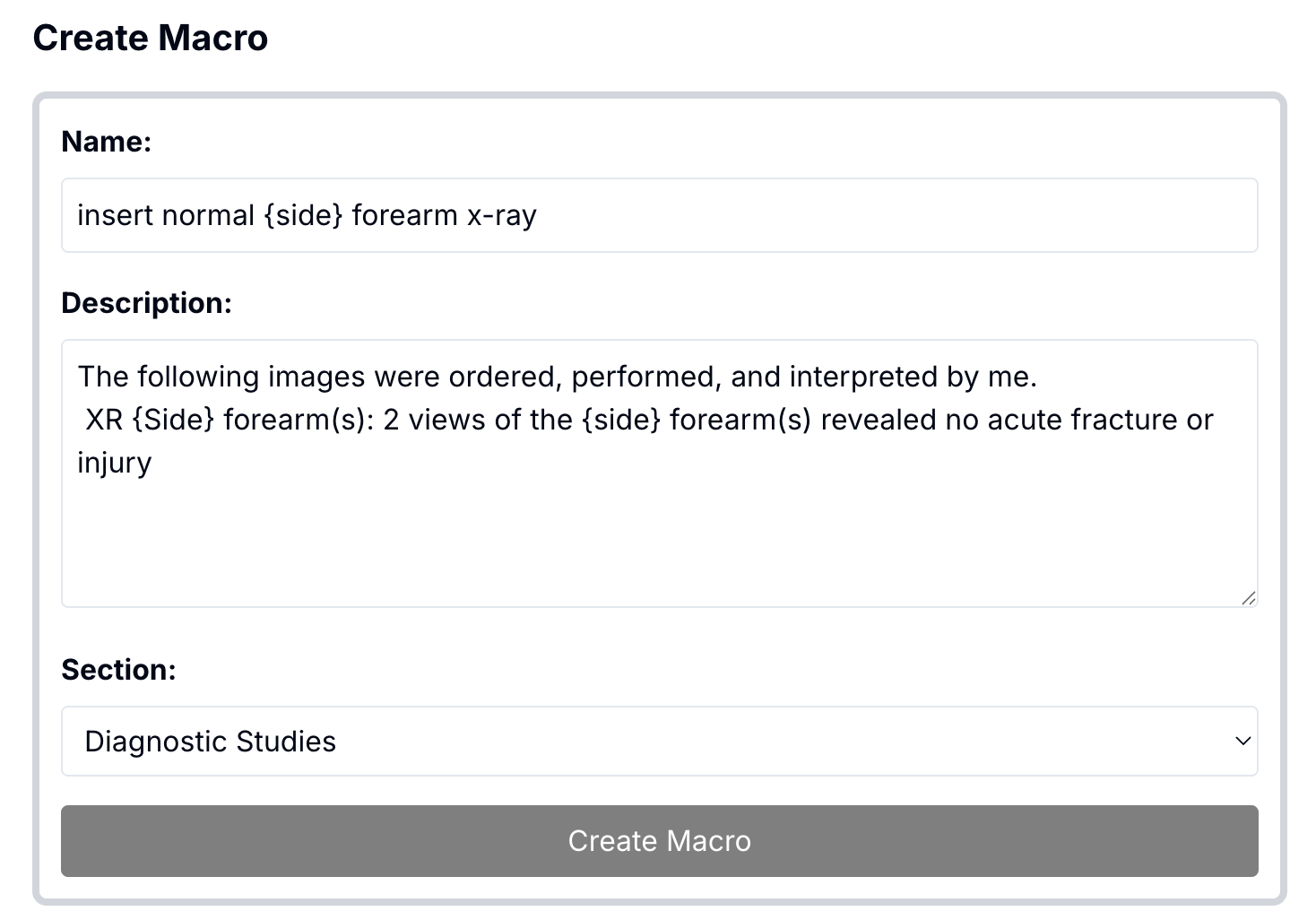
Managing/Using Macros:
Create/Manage in web portal → Macros tab.
Sample Template:
Macro: Normal Shoulder Exam
5. Procedures & Automatic Coding
Procedures
- • Templates in web portal → Procedures
- • Automatically recognized; no special voice prompt needed
- • Fill specifics via variables (e.g., side, size, approach) as needed
Automatic Coding (CPT & ICD)
- • Enable in Settings → Automatic Coding
- • Review suggested codes alongside your note
- • Confirm accuracy before submission
How to Use Procedures:
Procedures can be added to your profile at app.orthoscribe.ai under the "Procedures" tab
- AI will automatically recognize procedures from the context of the visit and document them - no voice commands are required
- You no longer need to create separate injection notes for each laterality of finger.
- Our procedure templates are built with variables which the AI fills in
Sample Template:
Procedure: Subacromial Injection
6. Reviewing, Editing & Exporting Notes
On Mobile
Review structured sections and make quick edits.

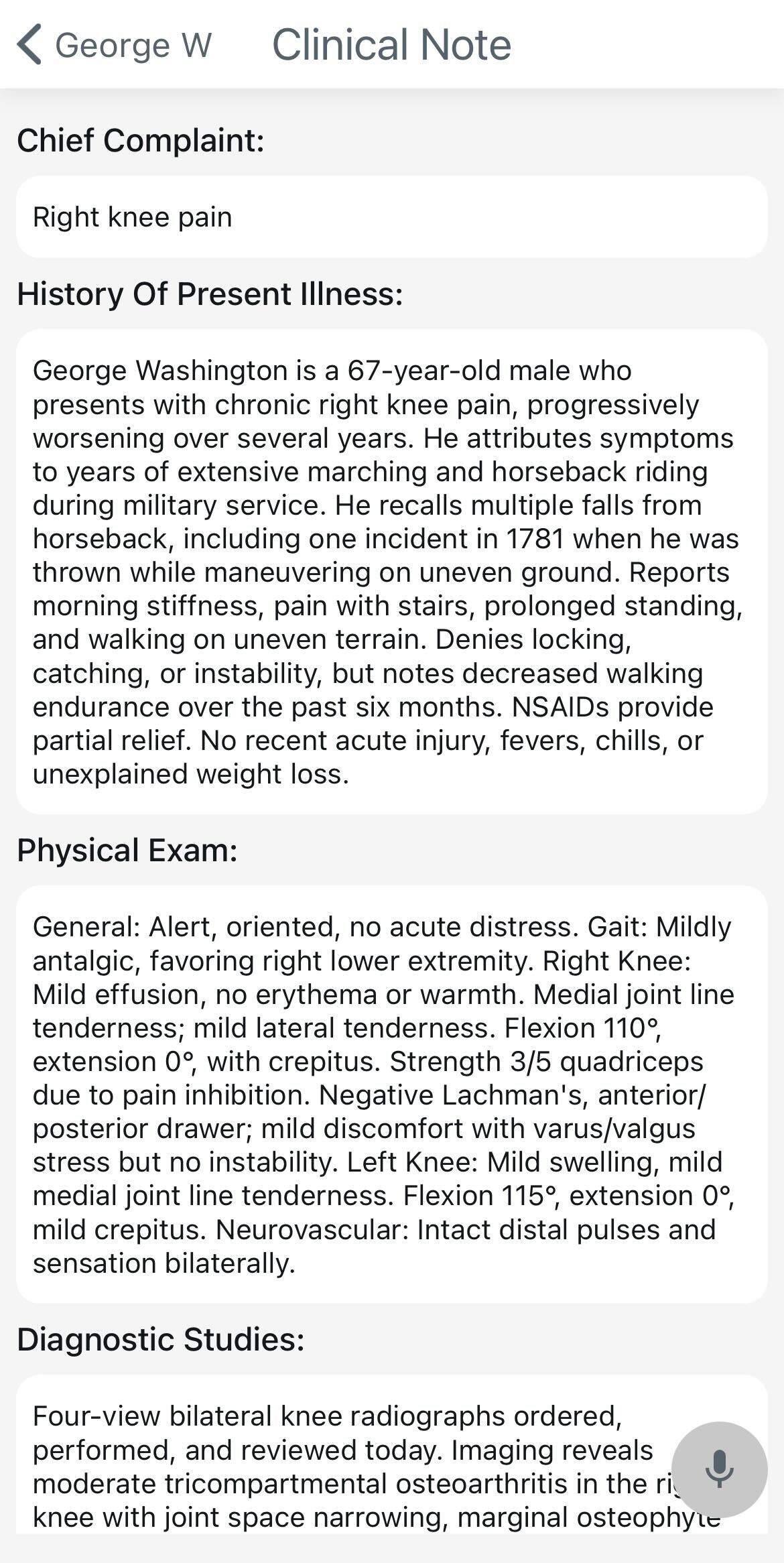
On Web (app.orthoscribe.ai)
Left panel = encounters list; main panel = note sections.
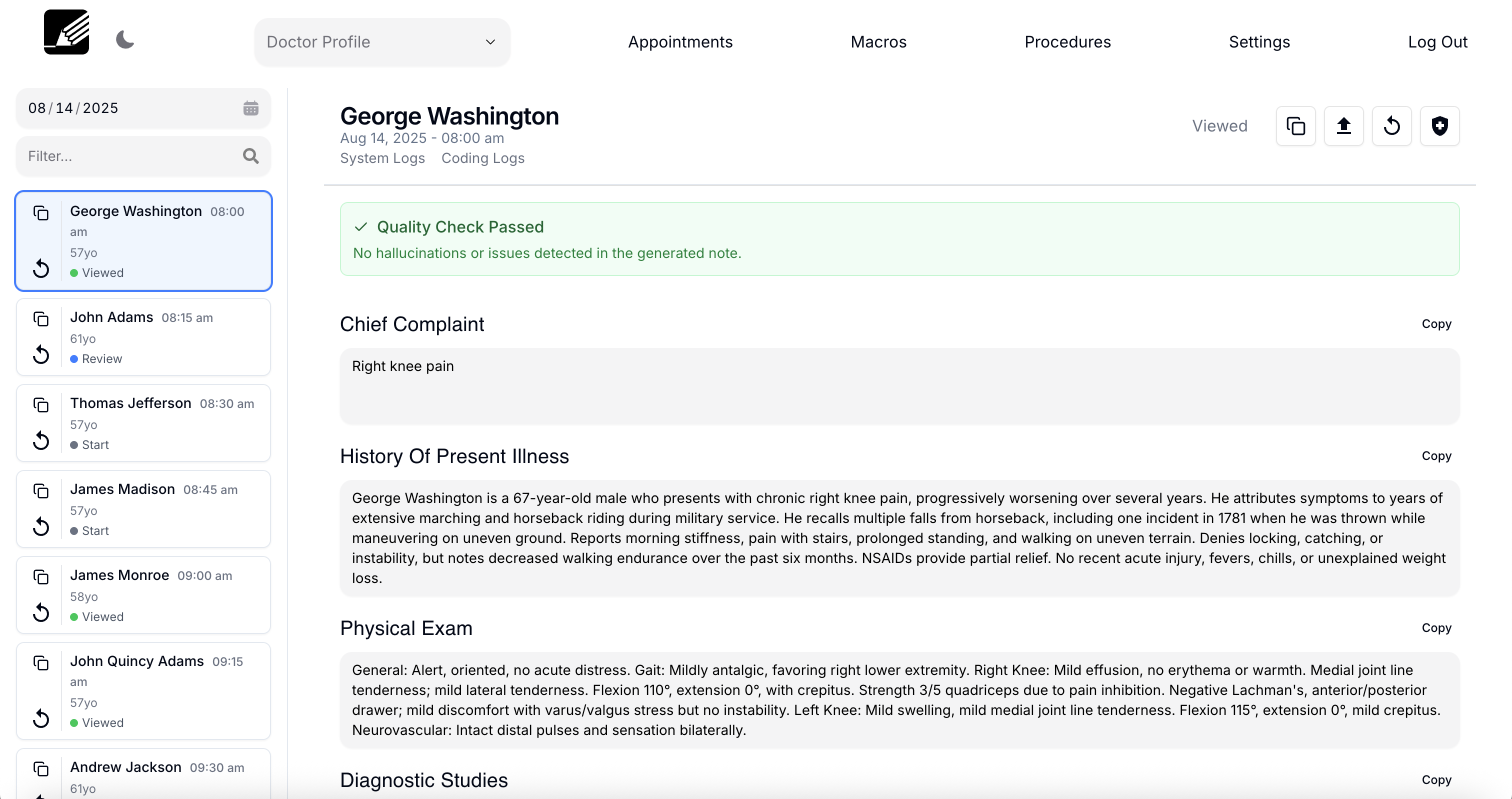
Button Guide:

- Copy Note to clipboard
- Edit note
- Upload note to EMR
- Reprocess note
Export Path
- • Notes auto-upload to EHR; finalize in EHR
- • Notes can be manually uploaded by pressing this Export button on the webapp.

7. Freeform Notes (Op Notes, Letters, etc.)
From a patient, choose Freeform Note. Dictate continuously; we correct punctuation/spacing.
Export: At the bottom of the note, you can select the section in Athena you would like the note to be exported to and select "Export to EMR" when completed.
Freeform notes are blank documents which can be dictated and not separated into the separate sections as your clinic notes are. Can be used to dictate operative notes, letters to legal teams or nurse case managers or referring physicians.
To dictate a freeform note, simply click on the patient's name and select "Freeform Note" under Note Type (green in the image to the right). Start dictating and we will process your dictation with corrections to spelling and punctuation.
At the bottom of the note, you can select the section in Athena you would like the note to be exported to and select "Export to EMR" when completed.
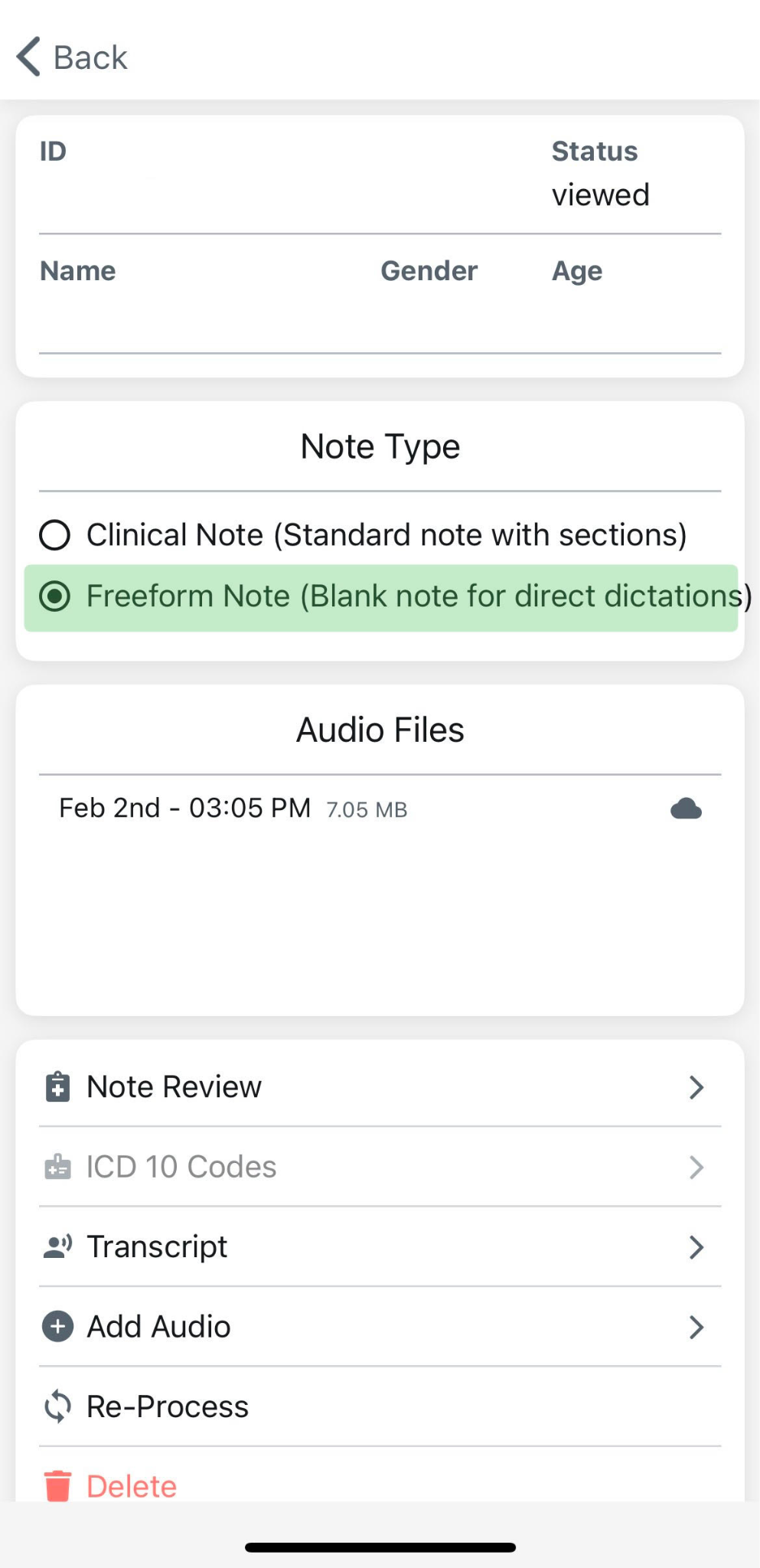
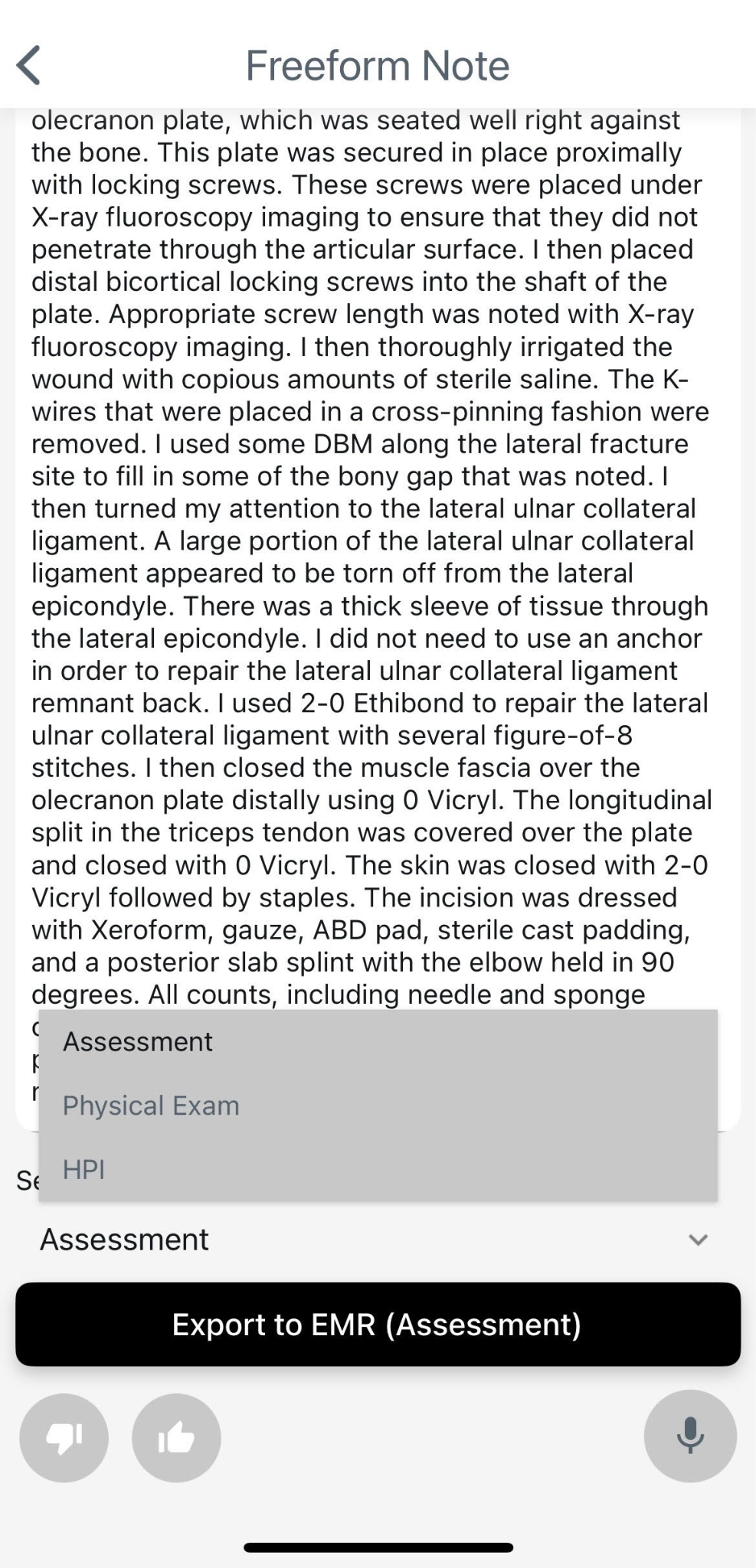
Tips and Tricks:
- • You can dictate with or without punctuation. Our AI system will transcribe what you dictate and fill in the appropriate punctuation (periods, commas) as needed.
- • You will have to dictate when you want a "new line" or "new paragraph"
- • We transcribe what you dictate and fix the terminology/punctuation using AI to ensure that the transcriptions are accurate.
- • Don't forget to hit "Export to EMR" at the bottom of the notes to ensure that they get transferred over to Athena. We unfortunately do not automatically send all freeform notes over into Athena since they can be used for various types of dictations.
8. Apple Watch
Open iPhone app daily (to sync today's list) → use Watch app to start/pause/end recordings with minimal distraction.
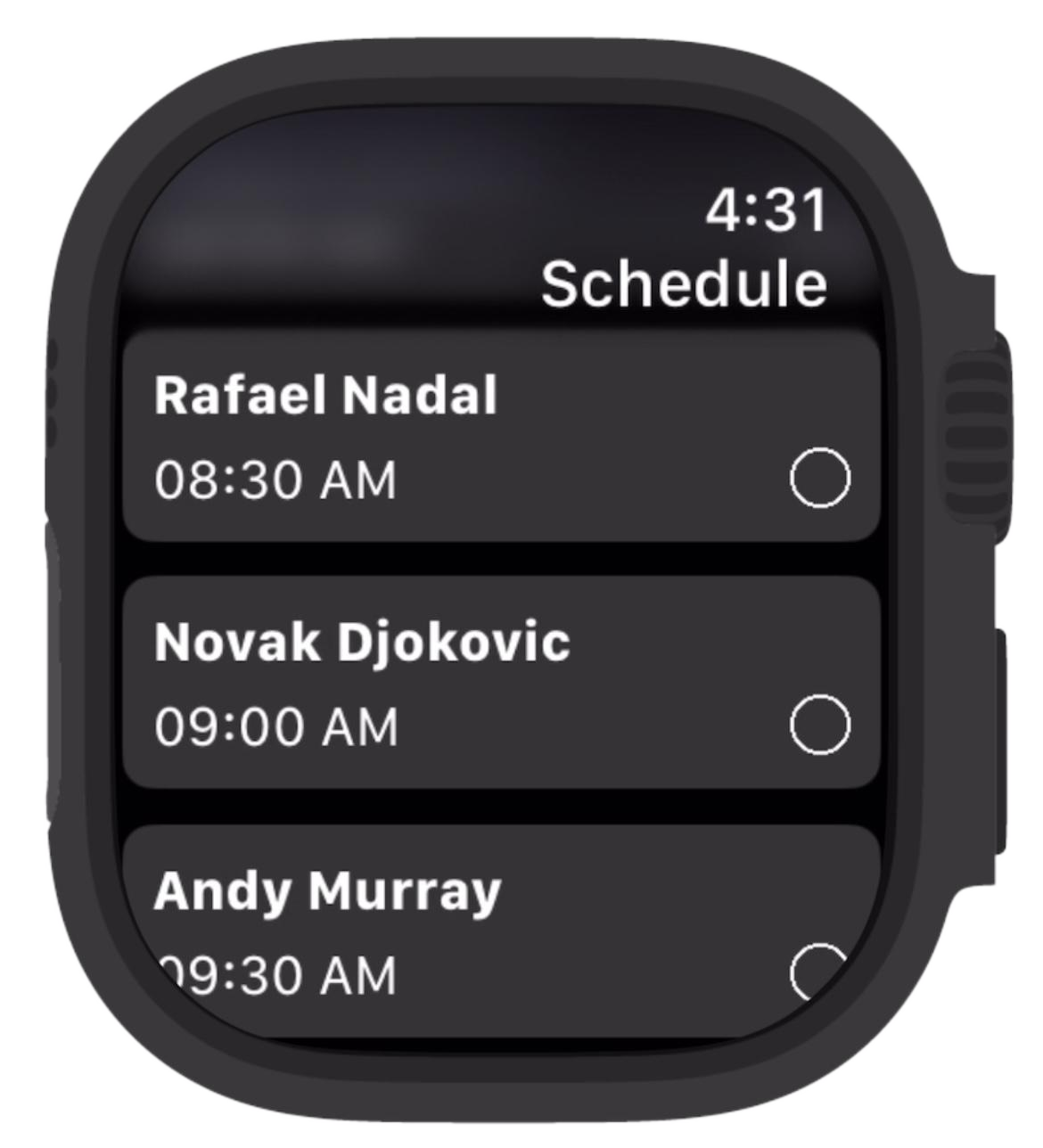
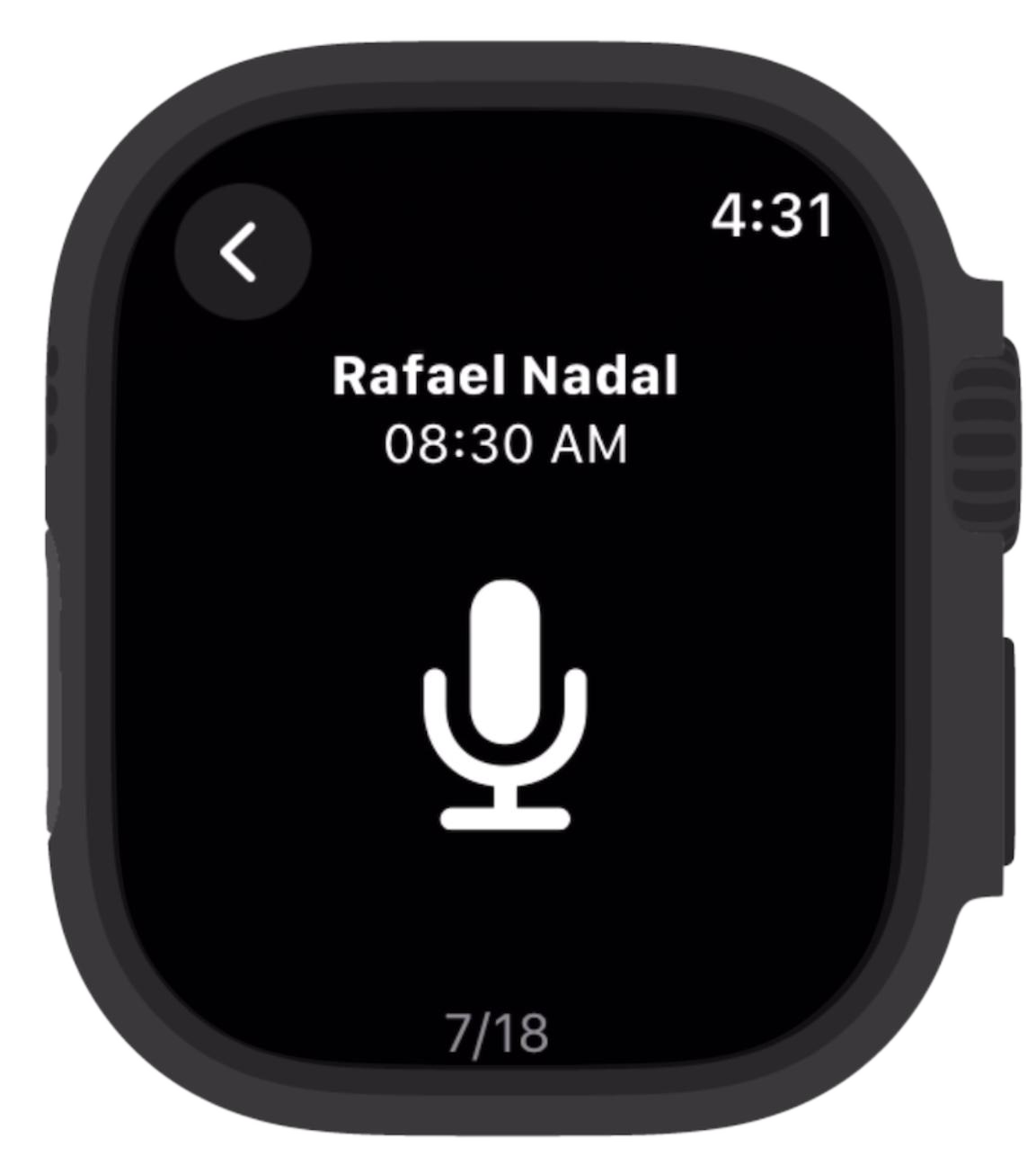
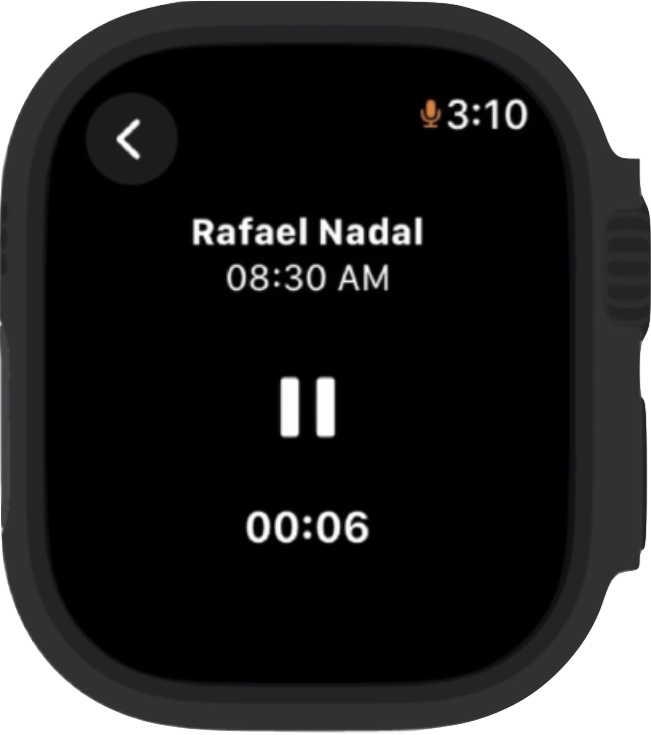
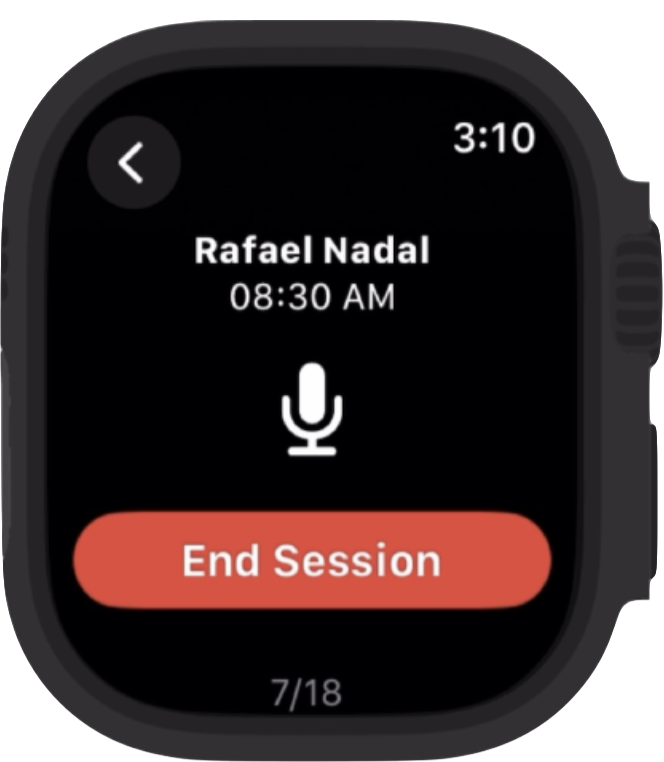
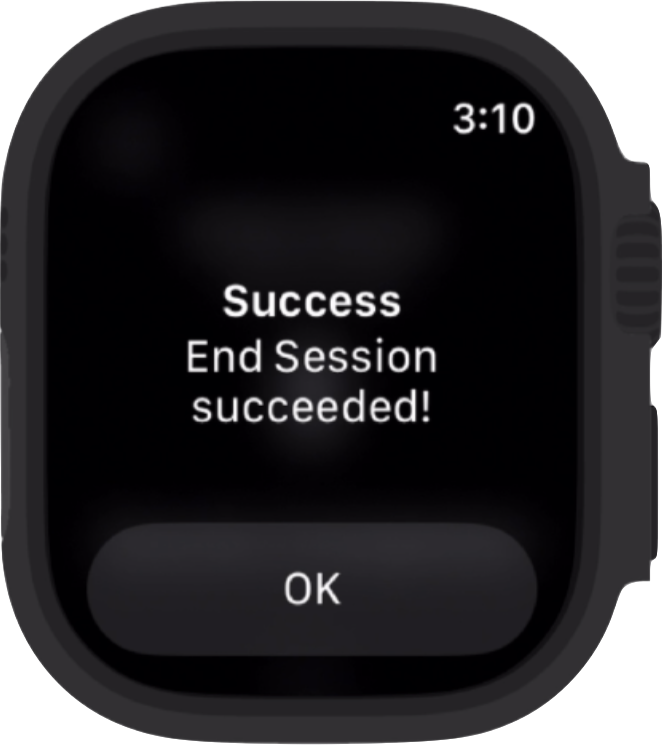
On the recording screen, you can navigate between patients easily by swiping left or right.
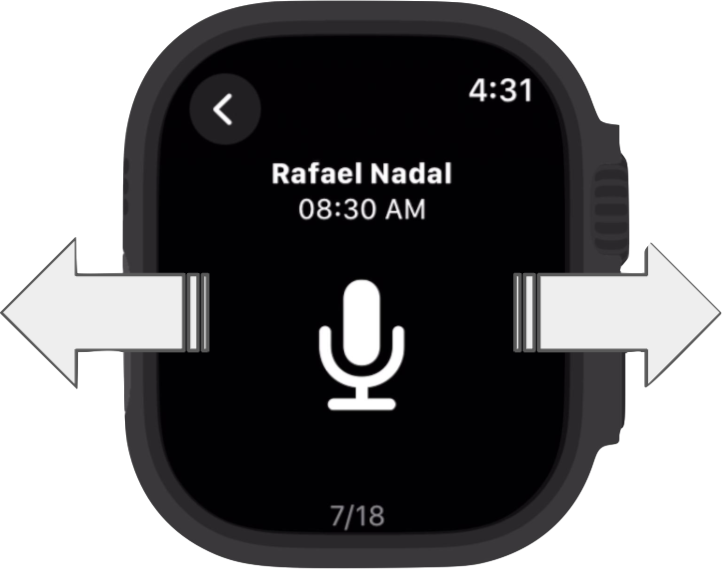
Please see our Apple Watch guide for more details.
9. Troubleshooting & FAQs
Why is nothing appearing on my schedule?
You should confirm the following:
- • Check the EMR code & provider filter.
- • Check Schedule on EMR to confirm schedule is correct.
- • Ensure you are on the correct date.
- • Ensure your own schedule is selected at the top of the Schedule page.
- • Pull down to refresh.

Why is the Wireless Mic not typing my speech into text?
Ensure desktop app is open and a text field is focused. If the issue persists, re‑pairing often solves this issue.
If you are having issues pairing, follow the steps in the Wireless Mic Guide.
Is it okay if the recording picked up ambient chit-chat or noise?
Yes, since only clinically relevant content is extracted from the transcript. Even so, you should always review and edit as needed.
Can I make sections of my note always format as paragraphs or bullets?
Yes. Notes can be transcribed in paragraph or bullet point form depending on your preference. Contact support@lotusscientific.com to update your settings.
Why does the app sometimes fail to upload recordings or notes?
Audio stays securely on your phone until uploaded successfully. You can safely continue recording, and the upload will resume once services are restored.
If you have audio that has not uploaded, you will see a cloud icon in the bottom left of your schedule screen. Once you're back online, click that button to upload the audio.
The app says a submission failed. Can the note or dictation be recovered?
Yes, you can click the button on the app or the website to upload to athena.

Why is the system mishearing common words? (e.g. "lower extremities")
Using the Word Swap feature you can submit a list of words/phrases that frequently get mistranscribed. In the app, the Word Swap tool can be found under "Settings" → "Speech to Text" where you can set replacements.
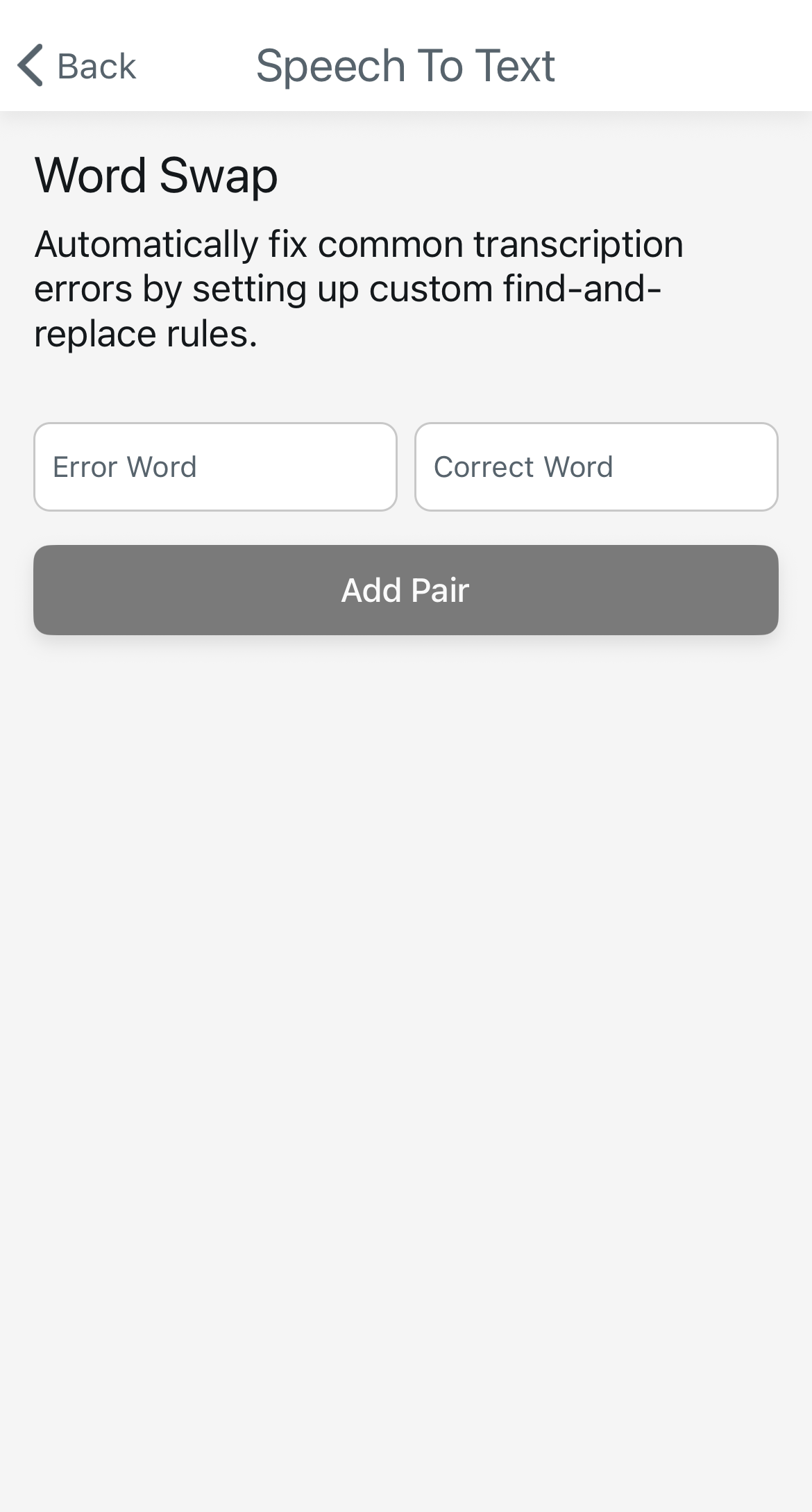
In the webapp, it can be found in the "Settings" page.

Alternatively, the Audio Keywords feature, found in the webapp Settings, gives the software an indicator to listen for specific words/phrases.

Can I see recommended E/M codes in the app?
Yes, you can enable coding features by going to "Settings" → "Automatic Coding". Then, in the mobile app, after viewing a note, click "Next (Diagnoses)" and "Submit", you'll see E/M codes. They are also visible on the web app at app.orthoscribe.ai.

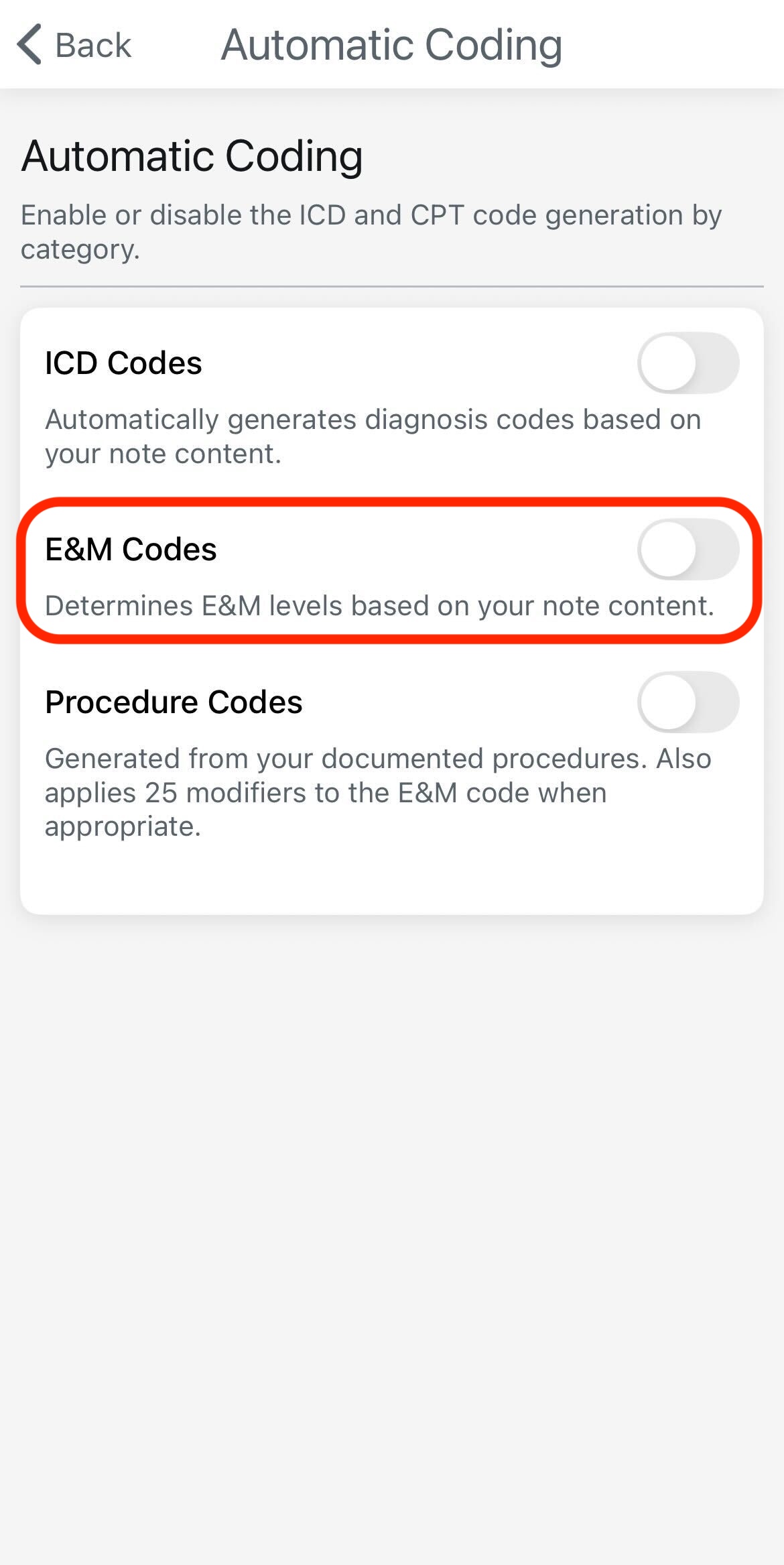
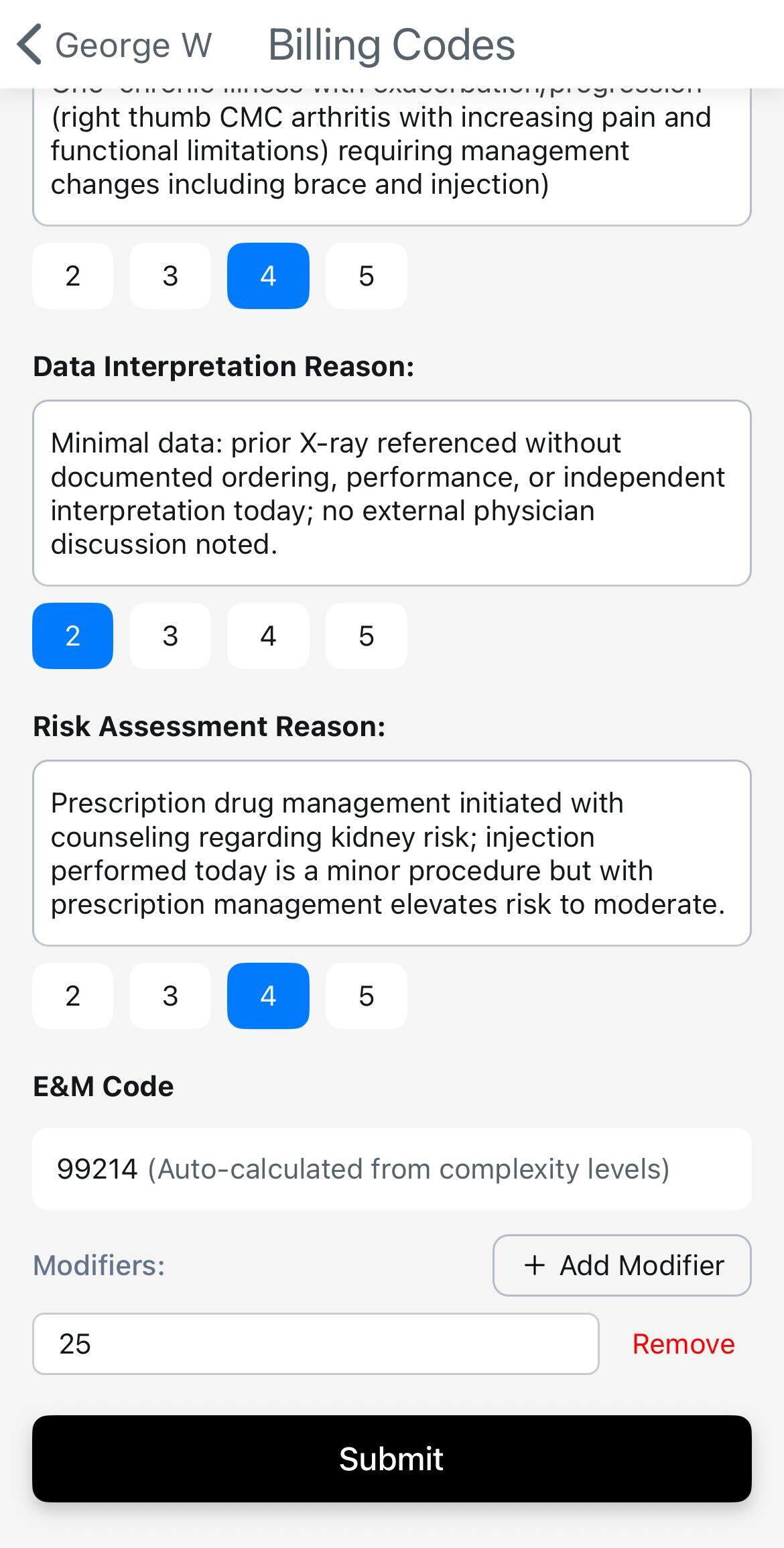
Alternatively, if already enabled you should be able to see the codes in the previously mentioned section.
Can I bulk import macros into OrthoScribe?
Yes, but not automatically. If you share your spreadsheet or macros, support can translate templates into macros and procedures for you.
Why does the app use my Apple ID instead of my work email?
Our app uses Apple ID by default so we can confirm biometric access (Face ID / Touch ID) for security purposes. This keeps your account HIPAA-compliant and ensures your data is protected.
If you'd prefer to sign in with your work email, we can enable single sign-on (SSO). This requires your company's IT department to set up a SAML bridge with us so your work email can be tied into the login flow.
10. Security & Privacy
- • HIPAA‑aligned workflows. Provider‑managed access via Schedule Sharing (revoke anytime)
- • Exports & disclaimers configurable under EMR Settings
- • Contact support for org‑level retention/configuration options
11. Contacts & Support
Clinical onboarding
Sravan Dhulipala — sravan@lotusscientific.com | +1 (404) 771‑8746